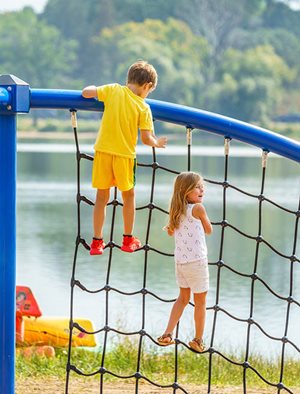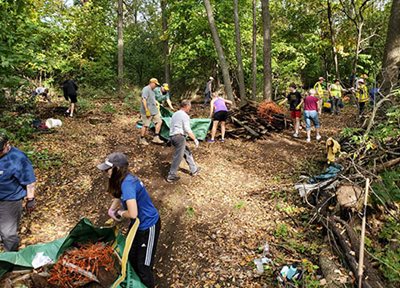People showed their love for metro area regional parks and trails in 2022 by making 69 million visits—a 6.4% increase over 2021—signaling that recent investments in the system are paying off.
Those visits are likely to keep growing, given the historic investment in regional parks and trails that Governor Tim Walz and the Minnesota Legislature made this year: $114 million to develop and maintain current parks and trails, acquire new land, increase visitation, preserve and connect high-quality and diverse natural resources, and create connections for trail and commuter users.
visits are likely to keep growing, given the historic investment in regional parks and trails that Governor Tim Walz and the Minnesota Legislature made this year: $114 million to develop and maintain current parks and trails, acquire new land, increase visitation, preserve and connect high-quality and diverse natural resources, and create connections for trail and commuter users.
The 2022 annual use estimates summary (PDF) highlights a particularly important trend: Parks use has been increasing steadily since 2017. Several parks implementing agencies had a record number of visits in 2022, including Ramsey County, which had 2.1 million more visits in 2022 compared to 2021.
Annual use estimates allow the Met Council and partner agencies to calculate each park agency’s share of regional parks and trails grant funding, as well as monitor trends over time. Other Met Council parks research fills out of the picture of who parks visitors are, how they use the parks, and what barriers they face in using them, explained Darcie Vandegrift, principal researcher at the Met Council.
Upgrades at Lake Waconia Regional Park attract more visitors
Carver County was another area of the region that saw a particularly large increase in visits in 2022—almost 250,000 more than 2021, an increase of 28%. This is partly due to upgrades at Lake Waconia Regional Park, according to Vandegrift.
Si gnificant investments have been made in Lake Waconia Regional Park over the past five years, including $1.5 million in state bonding in fiscal year 2019 and $2.5 million in fiscal year 2021. These investments have been used to enhance the infrastructure of the park by restoring a Met Council wastewater interceptor pipe and City of Waconia wastewater pipe, which allowed for the construction of more multi-purpose trails. In addition, collaboration with the DNR enabled Carver County to construct more public waterfront access at Lake Waconia.
gnificant investments have been made in Lake Waconia Regional Park over the past five years, including $1.5 million in state bonding in fiscal year 2019 and $2.5 million in fiscal year 2021. These investments have been used to enhance the infrastructure of the park by restoring a Met Council wastewater interceptor pipe and City of Waconia wastewater pipe, which allowed for the construction of more multi-purpose trails. In addition, collaboration with the DNR enabled Carver County to construct more public waterfront access at Lake Waconia.
Recent investments also allowed Carver County, with support from the Norman and Ann Hoffman Family Foundation, the Met Council, and the Trust for Public Land, to acquire the historic “Coney Island of the West”—a 25-acre island in the middle of Lake Waconia—as part of the park. Marty Walsh, Carver County Parks Director, explained that the island has been revamped with the addition of picnic grounds, trails, beaches, and a boat launch.
 Walsh said that public reception of the developments at Lake Waconia Regional Park has been very positive. Carver County is in the process of adding even more upgrades to the park, including a visitor facility with an indoor reservation-based gathering space, modern restrooms and changing areas, and recreation equipment rentals.
Walsh said that public reception of the developments at Lake Waconia Regional Park has been very positive. Carver County is in the process of adding even more upgrades to the park, including a visitor facility with an indoor reservation-based gathering space, modern restrooms and changing areas, and recreation equipment rentals.
State makes historic investments in regional parks
Minnesota Governor Tim Walz and the 2023 Minnesota Legislature approved a variety of funding for regional parks and trails. The system will receive nearly $29 million for operations and maintenance across fiscal years 2024 and 2025, which includes a one-time $6 million boost and an ongoing annual increase of $1.5 million. Regional parks and trails will also receive more than $54 million in Legacy funds in fiscal years 2024 and 2025, more than $16 million in bonding for infrastructure, and $9 million in one-time state funds for modernizing parks and trails. These combined investments represent the largest state investment in the region’s parks and trails in recent history. Some of these state contributions are matched by Met Council funds.
If the findings from the 2022 use estimates tell us anything, it’s that these developments will lead to an even-more-used and appreciated regional parks and trails system in the future.
Annual use estimate details.